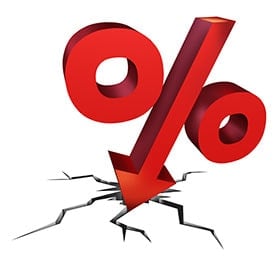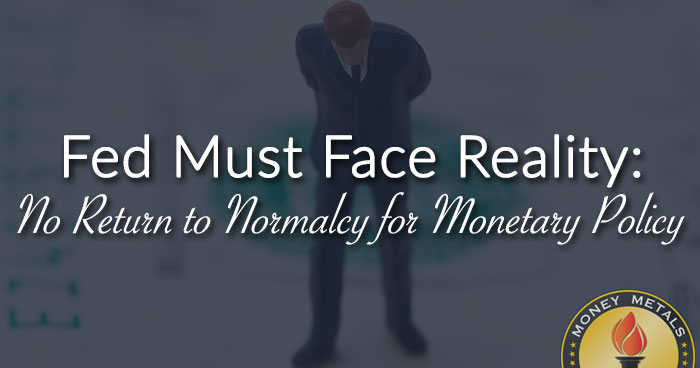More than a decade after the 2008 financial crisis, U.S. monetary policy continues to operate in crisis management mode.
Despite a long, drawn-out rate-hiking campaign – now paused – the Federal Reserve has yet to bring its benchmark interest rate up to normal levels historically.
It has yet to unwind the vast majority of the nearly $4 trillion in emergency asset purchases added to its balance sheet.
The Fed outlined its “normalization” policies back in September 2014.
The two main components of normalization are gradual increases in the federal funds rate toward neutral and gradual reductions in securities held on the central bank’s balance sheet.
Even with the benefit of an unusually prolonged period of favorable economic conditions, progress toward normalization has been slow and fleeting.
Expect Continually Low-Interest Rates, Ongoing Stimulus
Full normalization – a return to pre-2008 monetary conditions as is the Fed’s stated goal, may never come.
It may not be possible to withdraw much more stimulus from mortgage and equity markets without collapsing them. It may not be possible to unload U.S. Treasury securities without causing a funding crisis for the government.
The governmental, corporate, and consumer sectors of the economy are ALL addicted to debt growth fostered by artificially low-interest rates.

The Fed wants to wean everyone off easy money. The problem is, everyone is behaving as if easy money will never end.
Central bankers can’t act normally when private and public debt levels are abnormally high and projected to go much higher. The Fed wants to keep hiking rates to discourage, in former Fed chairman Alan Greenspan’s words, “irrational exuberance.”
But going one hike too far or too fast risks triggering a deleveraging event that brings about another financial crisis.
At its most recent policy meeting, the Federal Open Market Committee (FOMC) vowed to be “patient.” Minutes released last Wednesday show the Fed citing “a variety of considerations that supported a patient approach to monetary policy at this juncture as an appropriate step in managing various risks and uncertainties in the outlook.”
Cutting through the dense Fedspeak, policymakers essentially said they put their rate hiking campaign on hold due to risks in the economy.
Left unstated were possible policy concessions made to Wall Street and Washington.
Perhaps Fed officials got spooked by the sharp stock market correction in late December. Perhaps they succumbed to political pressure from the Trump administration’s “Plunge Protection Team.”
Politicians Forever Rely on the Fed to Bail Them Out
The Trump administration and both parties in Congress all (save for a few, rare voices of fiscally responsible dissent) agree on pushing forward with trillion-dollar budget deficits.
They all are on board with expanding the national debt (which recently crossed the $22 trillion mark) well beyond the total size of the economy… well beyond the previous debt-to-GDP ratio high incurred temporarily during World War II.
Wars and other crises in American history were always followed by efforts to “return to normalcy” (as President Warren G. Harding famously called for after World War I). There has been no return to normalcy since the 2008 financial crisis, and no sincere effort on the part of policymakers to stop financial bubbles from forming or reduce the national debt.
Our elected leaders in Washington are planning for a long fiscal emergency.

They are counting on the Fed to accommodate their abnormal spending behavior with easy money, with Quantitative Easing, with debt monetization on a grandiose scale… with whatever it takes to avert a default on government bonds and entitlement program promises to voters.
And the “patient” Fed may already be preparing its next stimulus campaign.
Former Fed chair Janet Yellen told CNBC recently, “If global growth really weakens and that spills over to the United States, while financial conditions tighten more and we do see a weakening in the U.S. economy, it’s certainly possible that the next move is a cut.”
When the Fed starts cutting again, you can bet another asset bubble will follow. Stocks have already had a huge multi-year run. At present, the most depressed asset class – the one that seems most due for a new bull market cycle – is commodities.
A bull market in hard assets would coincide with a rise in inflationary pressures and renewed investor interest in time-tested inflation proxies such as gold and silver.

About the Author:
Stefan Gleason is CEO of Money Metals Exchange, the company recently named "Best Overall Online Precious Metals Dealer" by Investopedia. A graduate of the University of Florida, Gleason is a seasoned business leader, investor, political strategist, and grassroots activist. Gleason has frequently appeared on national television networks such as CNN, FoxNews, and CNBC and in hundreds of publications such as the Wall Street Journal, TheStreet, and Seeking Alpha.





